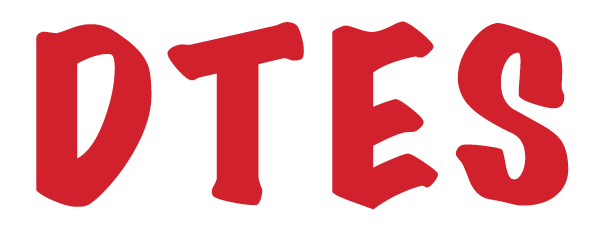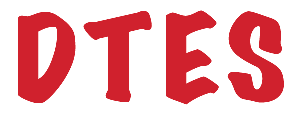Overview – Bitcoin, Blockchain, NFT
Bitcoin, Blockchain and NFTs
Bitcoin
Bitcoin is a decentralized digital currency, without a central bank or single administrator. It can be sent from user to user on the peer-to-peer bitcoin network without the need for intermediaries. The number of bitcoins is finite at 21 million.
Bitcoin Halving
Bitcoin halving is a condition Satoshi Nakamoto (the unknown originator of bitcoin) set in bitcoin’s protocol that requires the bitcoin block reward to be cut in half every 210,000 blocks, approximately every 4 years. Next halving will be in 2024 on block 840,000. So yeah a lot more to it but don’t wanna get bogged down. Usually prices go way up after a halving. Just wanted to mention it in case you heard the term.
Mining Bitcoin
Individuals and companies process the movement of bitcoin over a peer-to-peer network. This is called mining. There is a cost to the persons moving the bitcoin for this processing and it is termed gas or fuel cost. The old days of mining on your home computer are gone: Highly-specialized computers are now used to mine and it is now big money operations involved all across the world. Usually mining operations locate in areas of cheap electricity and government allowance.
Bitcoin Blockchain
Bitcoin transactions are verified by network nodes through cryptography and recorded in an open-source public distributed ledger called a blockchain. The Ethereum blockchain is also open-source and public. More later on Ehtereum.
Crypto Token
The term crypto token refers to a special virtual currency token or how cryptocurrencies are denominated. These tokens represent fungible and tradable assets or utilities that reside on their own blockchains.
A digital asset that can be used to purchase goods and services in exchange for legal tender.
Broadly speaking a crypto token is like a digital ‘coin’. It is a unit of that particular cryptocurrency. eg Bitcoin, Doge coin, Tether, PancakeSwap…
List of 100 crypto coins: https://coinmarketcap.com/tokens/
Fungible
Fungible means an asset is returnable or negotiable in kind or by substitution: Able to be substituted for something of equal value or exchange. eg Dollars – one $10 bill = another $10 bill = two $5 bills = ten loonies.
Is bitcoin fungible – I believe bitcoin is fungible. One bitcoin = one bitcoin = 100,000,000 satoshis. But it is a debated subject.
Non-Fungible
Corresponds to an entirely unique digital asset with a unique value. It cannot be traded like for like. There is no inherent parity between the digital asset and any other digital asset. Created around 2012, hit mainstream in 2021.
About NFTs
⇒ NFTs
Non-Fungible Token – NFT
Non-Fungible Token corresponds to an entirely unique digital asset/assets with a unique value. It cannot be traded like for like. There is no inherent parity between the digital asset and any other digital asset. The token is just that: It is proof of ownership of the digital asset it refers to.
Note: The term NFT is commonly used to mean both the asset and the deed of ownership. Technically speaking NFT is just the deed.
** When you buy an NFT you get a Deed for / Access to the Digital Asset.
NFT Deed
The NFT deed is an entirely digital format, a unit of data held on a blockchain (digital ledger). It provides the same amount of security as a physical deed but in a digital space.
An NFT deed proves ownership through an unbreakable record of ownership. No matter how many times it’s bought and sold, there will always be a chain that leads back to the original creator of the NFT.
The NFT deed is your portal to the asset. It will normally have a link or serial code that will direct you to the asset you’ve paid for. Purchase of an NFT includes rights of access to the asset. The NFT deed itself does not contain the asset. The asset is held elsewhere for safekeeping
Storage of NFT asset – IPFS (InterPlanetary File System)
At this time, the safest place to store a digital asset is the IPFS, a peer-to-peer long-scale storage network.
FYI: Blockchain isn’t able to store an asset file.
Can be stored on personal computer but this is not considered secure.
As digital image files, what stops these items from being copied and duplicated?
To use the analogy of an artist’s signature as validating an artwork, an NFT asset will have a digital watermark or signature that will identify it as a unique item. an NFT asset would use the validation of the blockchain as their signature. In much the same way as Bitcoin is tracked, the purchase of an NFT gets archived on the blockchain ledger.
Copyright Rights
A contract at the time of purchase states the copyright rights of the NFT. Many are similar to physical art asset purchases with respect to copyright but the contract states the parameters of the sale.
Smart Contracts
Purchase and copyright parameters are hammered out in what are known as smart contracts, digital contracts that automatically regulate and monitor the legal aspects of any NFT transactions that take place.
Some NFT selling platforms will have a specific licensing contract for purchases via their platform, which usually will not include copyright transfer. Others allow artist and buyer to set their own parameters.
*** What Assets can be an NFT
Anything digital can be minted as an NFT.
Image, audio, video and multimedia files as long as they are supported by the NFT architecture.
(There is the case of the tennis player selling off parts of her arm as NFTs?? – but let’s leave that for now.)
NFTs examples: music, artwork, digital video clips, collectibles, video game skins, digital trading cards and virtual land.
Visual/Writen Art NFTs – probably the biggest market and purchase prices currently
Game NFTs – purchase of virtual objects within the game architecture. eg. Decentraland game – a plot of land was sold recently for $1.4M Mana (Decentraland currency), which equates to roughly $1.3M US.
Decentralized Finance and Event Ticketing are areas of interest wrt NFTs.
*** If I buy an NFT of an asset do I own all duplicates of that asset?
No. An NFT is a singular, indivisible digital item. It won’t infer ownership of duplicates in any way.
*** Create an NFT and Etherum Crypto
Create Asset – File Types
Export your creative asset as a file supported by the NFT architecture.
Image files – JPEG, PNG, GIF, SVG
Text based files – PDF
Audio files – MP3, WAV
Video files – MP4, WEBM
Multimedia file (audio, visual, text and metadata) – OGG
File types will change according to file relevance and creation of new file types.
There will be limits on file size to consider. Compression is an option.
Creating an NFT – Minting / Tokenizing
The creation of NFTs is known as minting or tokenizing. To do so, you’ll need to upload your file to a minting platform.
Choose a Minting Platform
Minting platforms fall into two main categories: DIY and membership.
DIY – Rarible, OpenSea, InfiNET, Cargo, and MintBase. Can tokenize creations without express permission.
Membership – SuperRare and Async Art. Membership-only platforms you must apply to.
Most platforms are attached to the Ethereum Blockchain. So you’ll need some ETH (Etherum native token)
To Be Continued…
The above info was summarized and at times completely lifted from: https://nftska.com
Sale of NFTs
*** Sale of NFTs
Copyright
NFTs are liable to copyright law just like any other form of intellectual property.
NFT Platforms – Buy, Sell, Auction
Most platforms that facilitate the selling of NFTs must have smart contracts detailing the rights of the sale of the object already in place.
It must be stated clearly in these contracts what the agreement is that has been made between the artist and the buyer, including what both parties stand to benefit from the sale of the NFT.
Anyone selling their NFT must be aware of their rights when it comes to the distribution of their artwork.
You can join some platforms only if you are invited by another member, which is one way of reducing the number of false actors that might be inclined to distribute another person’s artwork as their own. Foundation platform for example.
However, once you have been invited into Foundation, the verification continues: Users are often required to have a verified Twitter account, as well as an Ethereum wallet, the main form of currency used in trading NFTs.
By having an Ethereum wallet, you are able to trade your NFT using the Ethereum blockchain, a public ledger that is used by individuals to keep a track of every transaction that is made between you and any other member of the blockchain.
Most trading platforms act as an auction house. This method is seens as a safe, secure and fraud-free method of buying and selling.
You can sell or buy an NFT outside of these legitimized trading platforms, however, there would not be a guarantee that an NFT you purchase or sell is valid.
Many NFTs that have a system whereby an artist will make a profit from each subsequent sale of the original artwork, rather than a one-off fee from the first sale. This is a great way for an artist to keep earning money from a single sale of one artwork. Each transaction of the artwork from buyer to seller will be kept on the blockchain, which will allow the artist to keep track of each individual sale to make sure that they are getting their cut of that sale.
A popular and secure method of trading your digital artwork is through an Ethereum wallet, in which you should put a minimum of $50 in it’s currency, Ether. Many NFT exchange platforms will allow you to partner your wallet to their system to start verified trading of NFTs.
Creating an NFT – Minting / Tokenizing
The creation of NFTs is known as minting or tokenizing. To do so, you’ll need to upload your file to a minting platform.
Choose a Minting Platform
Minting platforms fall into two main categories: DIY and membership.
DIY – Rarible, OpenSea, InfiNET, Cargo, and MintBase. Can tokenize creations without express permission.
Membership – SuperRare and Async Art. Membership-only platforms you must apply to.
Most platforms are attached to the Ethereum Blockchain. So you’ll need some ETH (Etherum native token)
To Be Continued…
The above info was summarized and at times completely lifted from: https://nftska.com
*** Create an NFT and Etherum Crypto
Create Asset – File Types
Export your creative asset as a file supported by the NFT architecture.
Image files – JPEG, PNG, GIF, SVG
Text based files – PDF
Audio files – MP3, WAV
Video files – MP4, WEBM
Multimedia file (audio, visual, text and metadata) – OGG
File types will change according to file relevance and creation of new file types.
There will be limits on file size to consider. Compression is an option.
Creating an NFT – Minting / Tokenizing
The creation of NFTs is known as minting or tokenizing. To do so, you’ll need to upload your file to a minting platform.
Choose a Minting Platform
Minting platforms fall into two main categories: DIY and membership.
DIY – Rarible, OpenSea, InfiNET, Cargo, and MintBase. Can tokenize creations without express permission.
Membership – SuperRare and Async Art. Membership-only platforms you must apply to.
Most platforms are attached to the Ethereum Blockchain. So you’ll need some ETH (Etherum native token)
To Be Continued…
The above info was summarized and at times completely lifted from: https://nftska.com

